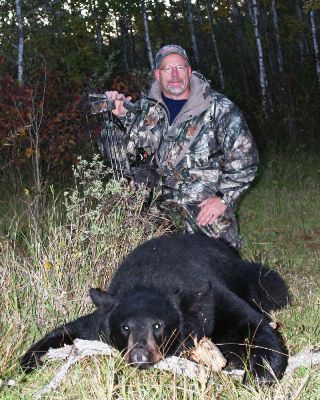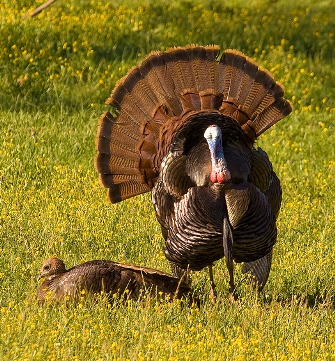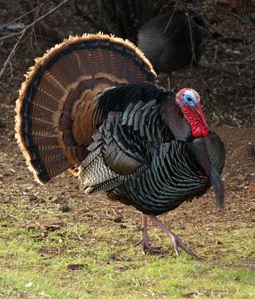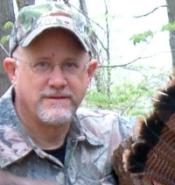Use These Six Tips to a Bargain Bear Hunt
By Bernie Barringer
You’ve heard a lot of talk lately about the economy.”It’s a buyer’s market in housing,” and “Get in on growth stocks now!” Chances are you’ve experienced at least some effect of it yourself. Well how about this one? “Now is a great time to find a bargain on a hunting trip.”
Here we are – only a couple months from the spring bear seasons, and many outfitters still have spots open. The tough economy combined with the high cost of travel has left lots of outfitters hungry to book a last minute trip to keep their annual income from falling off the edge of the table. It’s a great time to get a deal on a great bear hunt.
No, I’m not suggesting that you kick a guy when he is down. But it is a good time to negotiate a great deal if you understand that the outfitter has bills to pay and shouldn’t be expected to work for free. By the same token, even a discounted hunt puts money in his pocket that he wouldn’t have if he sold no hunt at all. So, in a spirit of cooperation, you can help out the outfitter who really does need to get some last minute deals made by using these six tips for a great deal on a hunt.
1. Make an offer.
Sometimes you can get a deal just by asking. Times are tough for everyone and that may include you. If you tell the outfitter that you really want to come but simply cannot afford to pay full price, he may make you a deal. Ask for 20-25% off and see what happens. You might be surprised.
2. Offer to trade for labor.

Sometimes you can get a discounted hunt by offering to help bait, clean up around camp or put up treestands.
Sometimes outfitters are short of help, and when they cannot pay for help, they might offer you a discounted hunt if you can help run bear baits, skin bears, take other hunters to their stands before getting in yours, clean up around camp, etc. You should have some experience before you make this offer, but if you have been around bear camps quite a bit; this one might work for you.
3. Ask for a second bear at no extra charge.
Some areas offer a two-bear limit, and you might get a second bear for no more than the price of the tag. You’ll already be in camp and it costs the outfitter very little to get you that second bear, but it makes a big difference to you.
4. Go with a buddy.
Offer to pay for one hunt full price if you can bring a buddy at half price. Then split it with him. A second hunter doesn’t cost the outfitter as much since you’ll probably be rooming with your friend. You’ll likely head out to the stands together so the outfitter has little increase in costs to get you back and forth. This also gives you and your buddy the chance to split the cost of gas if you are driving to the hunt. This strategy offers a lot of advantages to everyone involved.
5. Look for cancellations.
Often, people book hunts and something comes up – maybe a financial difficulty, a family emergency, or possibly a person just bit off more than he could chew financially or time-wise – and he has to cancel. The outfitter has this person’s deposit in his pocket and he is looking for another hunter to fill the spot. You could be that guy. Talk to the outfitter and see what kind of a deal you can make. A good place to start is to ask that the other hunter’s deposit be applied to your bill, and go from there.
6. Get a group or family discount.
What a perfect time to get a couple kids on their first bear! If an outfitter has several tags available, how about bringing a church group, a handful of friends or an entire family along? If you are going as a family, ask that the non-hunters be allowed to tag along at no charge. This is a great opportunity to negotiate a great deal and put some youngsters on bears, kids who might not otherwise get to experience the adrenaline-charged atmosphere of a bear hunt.
Again, and I stress – don’t go about this with an attitude of trying to take advantage of someone in a difficult situation. Just try to negotiate a deal that makes it very attractive for you to go on the hunt, while still making sure that the outfitter benefits, too.
You’re looking for a win-win relationship where everyone is happy. Don’t beat the outfitter up or be abrasive. Even if you do strike a deal, you don’t want to go into a camp where the outfitter and guide already have a bad feeling about you. You may not get their full measure of effort.
Take advantage of this window of opportunity for a bargain bear hunt, and make a memory that will last a lifetime.
***
About Bernie Barringer:
 Bernie Barringer hunts a variety of species in several states and Canadian provinces. He has published more than 400 articles in two dozen outdoor magazines and authored ten books on hunting, fishing and trapping. He is the managing editor of Bear Hunting Magazine, and blogs his hunts on his website www.bowhuntingroad.com.
Bernie Barringer hunts a variety of species in several states and Canadian provinces. He has published more than 400 articles in two dozen outdoor magazines and authored ten books on hunting, fishing and trapping. He is the managing editor of Bear Hunting Magazine, and blogs his hunts on his website www.bowhuntingroad.com.
Click here to read other articles by Bernie.
3,083 total views, no views today











